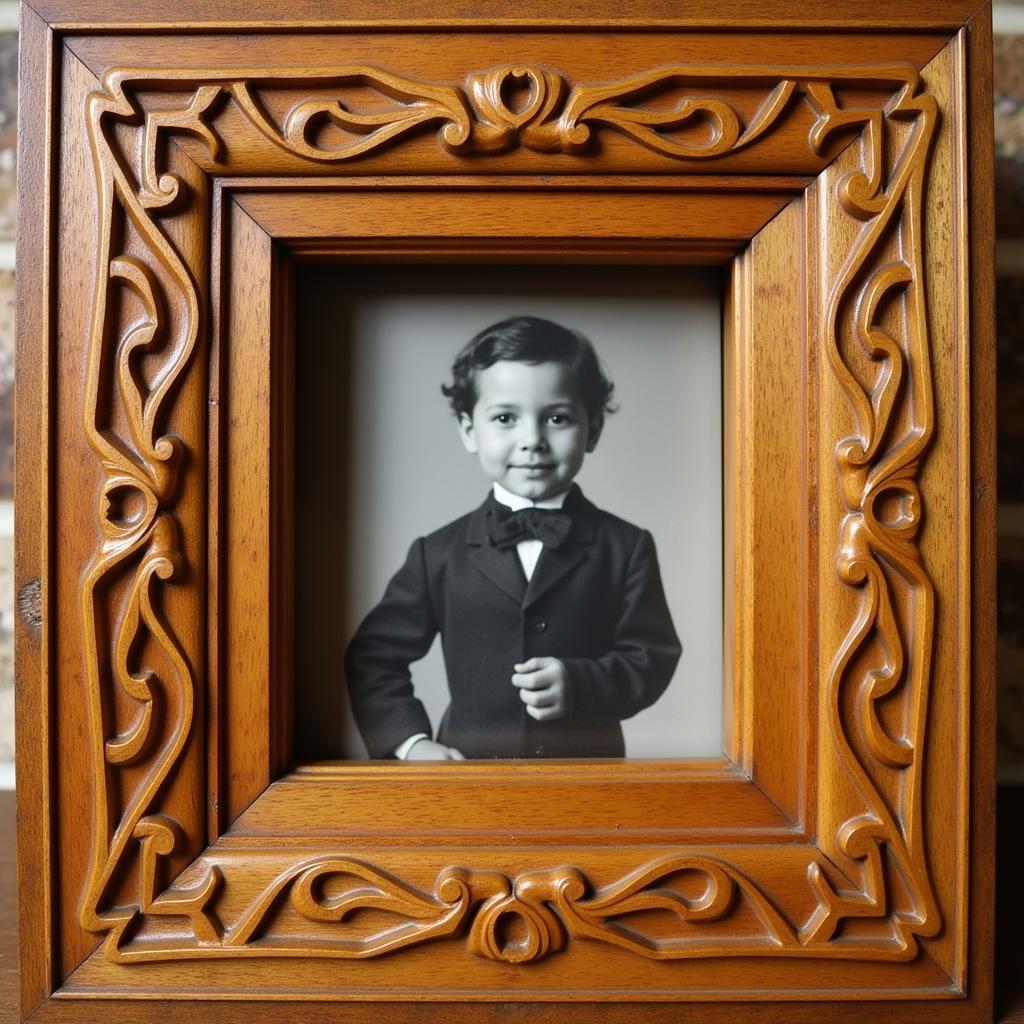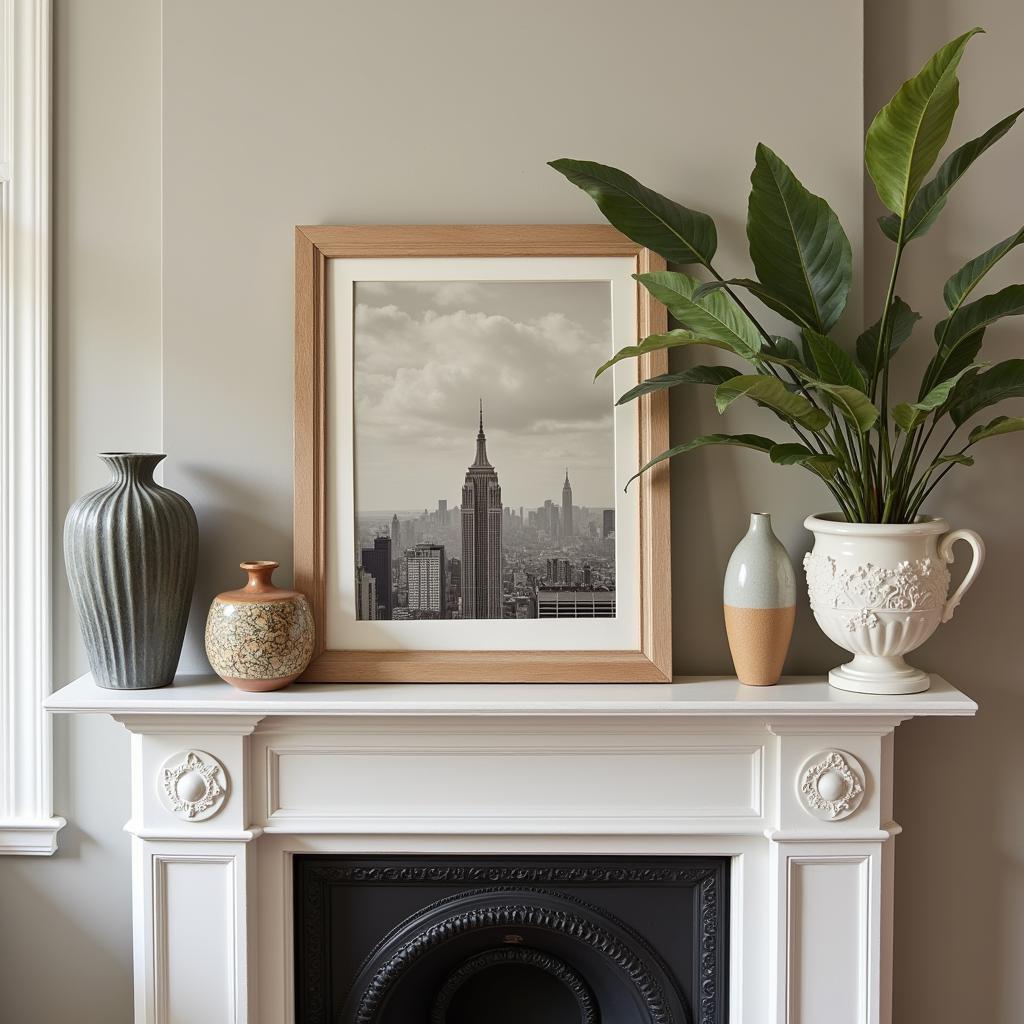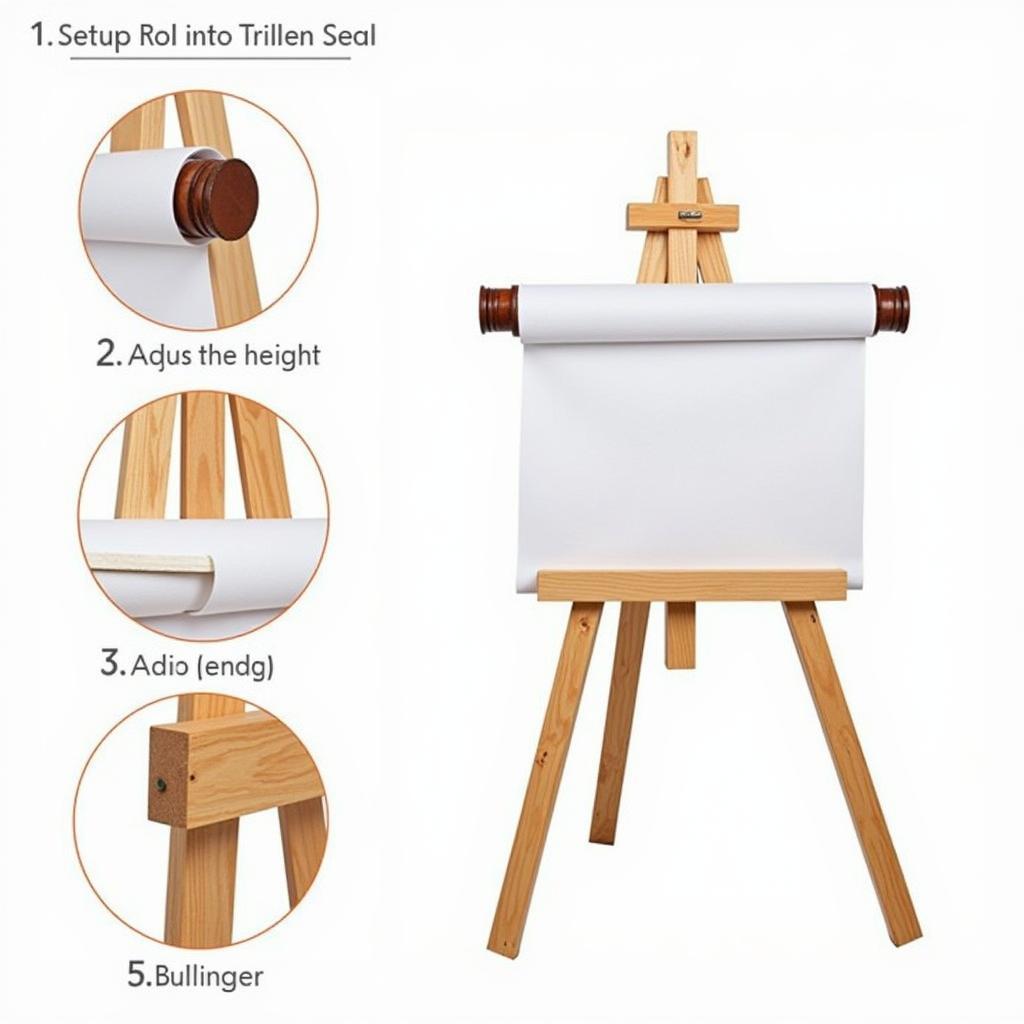Discovering the Art of Tramp Art Frames
Tramp Art Frames, with their intricate notched chip carvings, offer a unique glimpse into folk art history. These meticulously crafted frames, often made from discarded cigar boxes or crates, represent resourcefulness and an inherent human desire for beauty, even in times of hardship. From the late 19th to the mid-20th century, these distinctive pieces graced homes across North America and Europe, showcasing cherished photographs and artwork.
The History and Origins of Tramp Art Frames
The origins of tramp art are shrouded in a bit of mystery, with various theories surrounding its beginnings. One popular belief links the craft to itinerant workers, often referred to as “tramps,” who would create these frames as a means of bartering for food or lodging. While this theory contributes to the romanticism of the craft, it’s important to note that evidence suggests a wider range of individuals, including homemakers and skilled craftspeople, also contributed to the creation of these fascinating objects. The practice likely evolved from traditional chip carving techniques and blossomed into a distinct folk art form.
Regardless of its precise origins, tramp art represents a remarkable fusion of practicality and artistry. The chipped layers of wood, meticulously arranged to create geometric patterns and decorative motifs, speak to the patience and skill of the creators. These frames weren’t just functional; they were expressions of creativity, born from readily available materials.
Identifying and Appreciating Tramp Art Frames
What distinguishes a tramp art frame? The hallmark of this craft lies in its layered chip carving. Thin, notched pieces of wood, typically from softwoods like pine or cigar boxes, are stacked and layered to create intricate, three-dimensional designs. Common motifs include geometric patterns, floral elements, and sometimes even patriotic symbols. The frames often exhibit a warm, golden hue, a testament to the natural beauty of the wood.
 Tramp Art Frame Identification Guide
Tramp Art Frame Identification Guide
Are tramp art frames valuable? The value of tramp art frames can vary widely depending on factors such as size, intricacy of the carving, condition, and provenance. While some smaller, simpler frames might be found at affordable prices, larger, more elaborate pieces, especially those with a documented history, can command significant sums in the antiques market.
“Tramp art’s value lies not just in its aesthetic appeal, but also in the story it tells about a time when creativity flourished even amidst limited resources,” notes Dr. Eleanor Vance, art historian specializing in American folk art.
Caring for Your Tramp Art Frame
Tramp art frames, being crafted from wood, require specific care to maintain their beauty and integrity. Avoid exposing them to direct sunlight, excessive humidity, or extreme temperature fluctuations, as these can cause the wood to warp or crack. Dust regularly with a soft brush or a slightly damp cloth, taking care not to snag the delicate chip carvings.
“Regular dusting and careful handling are key to preserving these fragile pieces of art history,” advises Emily Carter, antique furniture restorer.
Where to Find Tramp Art Frames
Finding tramp art frames can be an exciting treasure hunt. Antique shops, flea markets, and online auction sites are all potential sources for these unique pieces. When searching online, use specific keywords like “tramp art frame,” “chip carved frame,” or “notched wood frame” to refine your search. Be prepared to examine photos carefully and ask sellers questions about the frame’s condition and history.
Tramp Art: A Timeless Craft
Tramp art frames are more than just decorative objects; they are tangible pieces of history, reflecting a time of ingenuity and artistic expression. Their enduring appeal lies in their unique aesthetic, their handcrafted nature, and the stories they whisper of the past. Whether you’re a seasoned collector or simply drawn to the beauty of folk art, a tramp art frame can add a touch of character and history to any space.
 Displaying your Tramp Art Frame
Displaying your Tramp Art Frame
In conclusion, tramp art frames represent a unique intersection of artistry and resourcefulness. Their intricate chip carvings, often made from humble materials, offer a glimpse into a time when creativity flourished even amidst challenging circumstances. Whether displayed in a modern home or a traditional setting, these frames continue to capture our imagination and remind us of the enduring power of folk art.
FAQ
-
What is tramp art?
Tramp art is a folk art form characterized by layered chip carving, often using discarded materials like cigar boxes. -
How can I tell if a frame is genuine tramp art?
Look for the distinctive layered chip carving, typically featuring geometric or floral patterns. -
How do I clean a tramp art frame?
Dust gently with a soft brush or a slightly damp cloth, avoiding harsh chemicals. -
Where can I find tramp art frames for sale?
Antique shops, flea markets, and online auction sites are good places to start your search. -
Are tramp art frames valuable?
The value can vary widely depending on size, intricacy, condition, and provenance. -
What type of wood was typically used for tramp art?
Softwoods like pine or the wood from cigar boxes were commonly used. -
How can I protect my tramp art frame from damage?
Avoid exposing it to direct sunlight, excessive humidity, or extreme temperature fluctuations.
When you need assistance, please contact Phone Number: 02462573573, Email: [email protected] Or visit us at: Savico Megamall, 7-9 Đ. Nguyễn Văn Linh, Gia Thụy, Long Biên, Hà Nội 10000, Việt Nam. We have a 24/7 customer service team.


